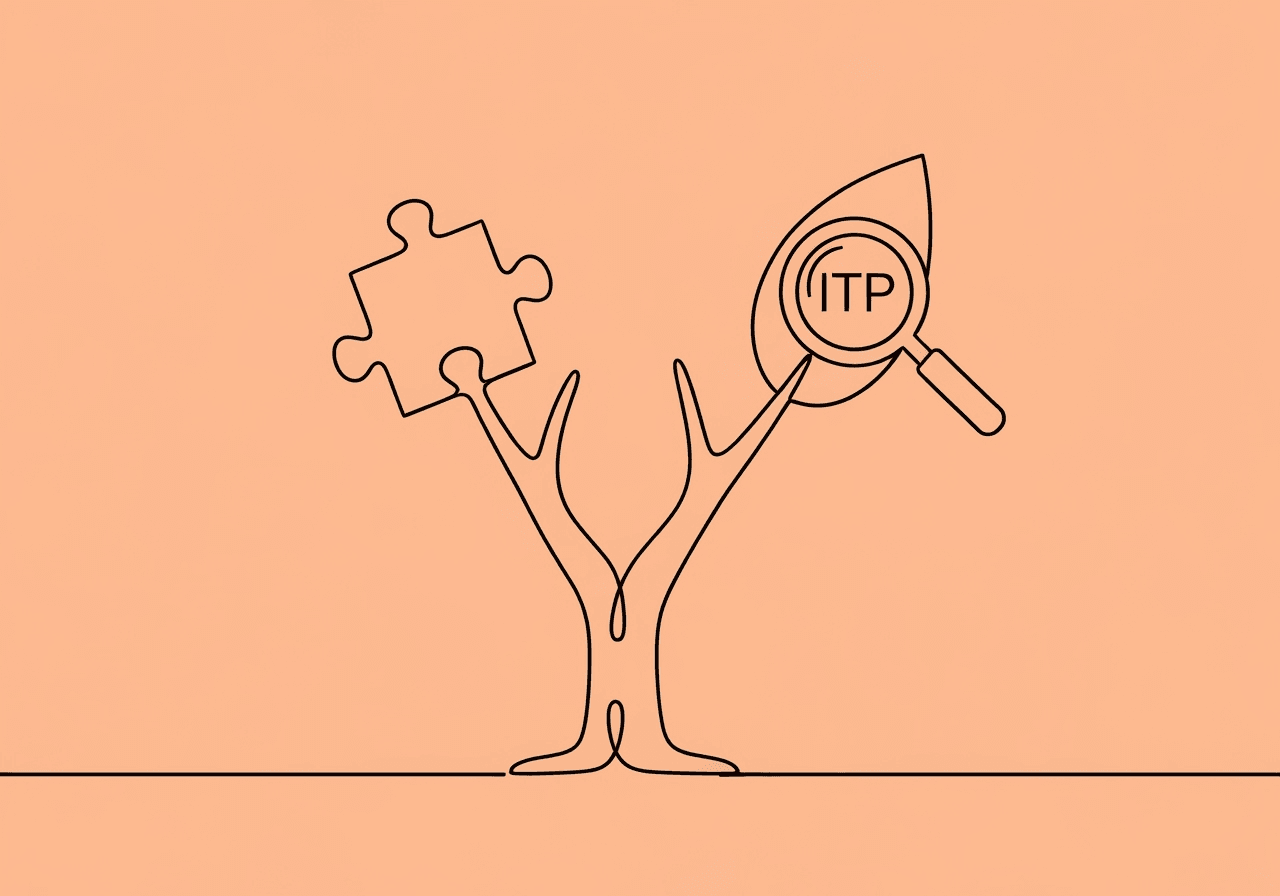BCBA Standards of Practice: Build Audit-Proof SOPs

In the fast-paced field of applied behavior analysis (ABA), ethical consistency protects client success and shields against regulatory risks. For Board Certified Behavior Analysts (BCBAs), the BCBA Standards of Practice serve as vital tools. They align with the Behavior Analyst Certification Board (BACB) Ethics Code, support HIPAA compliance, and meet state laws. A strong clinic policy manual turns these standards into everyday actions. It cuts down on mistakes, boosts efficiency, and builds team accountability.
Picture this: An audit uncovers weak spots in records or treatment steps. Solid ABA SOPs stop that by standardizing care from start to finish. This guide walks you through creating an audit-ready clinic policy manual for BCBA needs. You'll learn to set its scope, root it in rules, map out key processes like intake and behavior plans, and keep it fresh with training and checks. At the end, you'll hold the blueprint for ABA SOPs that lift your work while centering on clients.
Here are key takeaways to build your manual effectively:
- Ground every section in BACB ethics and HIPAA to ensure legal strength.
- Focus on core procedures like intake and FBAs for consistent, client-focused care.
- Use templates, training, and reviews to make SOPs practical and up-to-date.
- Aim for clear, step-by-step formats that engage staff and ease audits.
- Track changes and fidelity to sustain high treatment quality over time.
Introduction to Clinical Standards of Practice (SOPs)
Clinical standards of practice (SOPs) in ABA mean documented steps for steady, ethical, and effective service delivery. The BACB Ethics Code for Behavior Analysts (BACB Ethics Code (2022)) requires BCBAs to uphold competence and integrity. This includes clear processes that safeguard client welfare and rights. Such ABA SOPs anchor your clinic policy manual, linking to proven methods and legal musts.
These protocols go further than broad rules. They offer exact, repeatable actions for routine tasks. From first client contacts to tracking progress, they curb differences that harm results. In behavioral health, where custom care meets strict standards, ABA SOPs connect the dots. They allow room for individual needs yet demand sameness among providers.
BCBAs running ABA clinics gain big from SOP efforts. Efficiency rises, and audits become simpler to pass. Groups like the Council of Autism Service Providers stress that strong SOPs boost treatment reliability and team output (CASP Standards). This base shapes a manual that follows BCBA Standards of Practice and aids lasting progress.
Step 1: Define Scope, Audience, and Purpose
Start by setting the manual's limits to fit your clinic's setup without overload. Cover all clinical tasks, from evaluation to exit, but skip unrelated areas like HR unless they touch services. Target BCBAs, Registered Behavior Technicians (RBTs), and support roles. Use straightforward words, skipping extra terms—keep a pro but friendly tone that matches your brand's warmth.
The purpose statement grounds it all. It drives ethical, data-backed ABA services that put client safety, growth, and respect first. Pull from BACB basics like helping others, showing respect, and staying honest to shape this (BACB Ethics Code). Try wording like: "This manual puts BCBA Standards of Practice into action for steady, rule-following ABA support."
Put this in the preface, with update dates and sign-offs. Though basic, it stops overreach and matches BACB calls for sharp professional lines (Section 1.01 of the Ethics Code). Gather team views in early talks to tweak and gain support right away.
Step 2: Establish Compliance Foundation (BACB, HIPAA, State Laws)
Build a firm base by weaving in rules to all SOPs. Begin with the BACB Ethics Code, which covers duties in client care, oversight, and records (BACB 2022). Link parts like 2.0 (Responsibilities to Clients) to steps, such as getting consent before treatments.
Then, weave in HIPAA rules for handling protected health info (PHI). This means encrypting notes and securing storage. Train teams on privacy and run checks often, since breaks can cost up to $50,000 each (HIPAA Guidance for Providers). For example, set role limits on records and breach alerts in 60 days.
Add state rules too, like analyst licenses or Medicaid ABA paths. These differ by area—for instance, New York's doctor referral need (New York eMedNY Provider Manuals). List them in a compliance add-on, with links to sources. For more on HIPAA in ABA, see our HIPAA Compliance ABA Documentation guide.
Such a base makes your manual not just routine but court-ready, lowering review risks.
Step 3: Identify Core Standardized Clinical Procedures (e.g., Intake, FBA, BIP Creation)
Spot the key processes that shape ABA routines, zeroing in on vital spots like intake, functional behavior assessment (FBA), and behavior intervention plan (BIP) setup. For intake, detail initial checks: Collect medical background, assess needs, and get consent. Note that timelines vary by payer and state (Model Coverage Policy for ABA).
In FBA, outline a clear path to pinpoint behavior reasons via talks, watches, and data review—guessing drivers like seeking notice or avoiding tasks (BACB Task List). Stick to seen, tough behaviors, noting what comes before, the action, and what follows (ABC data).
BIP comes next, drawing from FBA to craft fixes: Pick stand-in behaviors, rewards, and fade-outs, with goals you can measure linked to client wins. Bring in input from parents and teachers for full plans (Virginia DOE Guidelines).
Use this table for quick access to 8-10 core procedures, each linked to BCBA Standards of Practice:
| Procedure | Description | Tie to BCBA Standards |
|---|---|---|
| Intake Screening | Gather history, assess needs, obtain consent (timelines vary by payer). | Ensures informed consent (Ethics Code 2.09). |
| Functional Behavior Assessment (FBA) | Collect ABC data to identify functions via observation and interviews. | Promotes evidence-based assessment (Section 2.15). |
| Behavior Intervention Plan (BIP) Creation | Design replacements, reinforcements, and goals based on FBA. | Supports client welfare through tailored plans (2.01). |
| Session Implementation | Deliver interventions with data collection on fidelity. | Maintains competence in delivery (1.05). |
| Progress Monitoring | Track goals with graphs and adjust as needed. | Ensures ongoing evaluation (2.11). |
| Discharge Planning | Review outcomes and transition services ethically. | Protects client rights at closure (2.16). |
| Crisis De-escalation | Use safe protocols for urgent behaviors. | Prioritizes safety and dignity (2.02). |
| Supervision Sessions | BCBA oversight of RBT work with feedback. | Fulfills supervision duties (4.06). |
| Documentation Review | Audit notes for accuracy and completeness. | Upholds record integrity (2.12). |
| Multidisciplinary Collaboration | Coordinate with families and providers. | Enhances holistic care (2.10). |
This blueprint spots must-haves, avoiding misses that hurt care.
Step 4: Write Concise, Step-by-Step SOPs (Format, Tone, Required Outputs)
Now, write SOPs in a steady, easy format: Numbered lists, bold actions, and term defs at first mention. Pick a pro, helpful tone—like "You'll team up with families to..."—to boost buy-in without stiffness.
Cover in each: Aim, range, roles (BCBA leads RBT work), steps, tools (data forms), and results like charts. Stress client focus in words, skipping bossy lines that cut freedom, following behavioral health tips (ICANotes Guide).
Keep it short: 1-2 pages per, with charts for tough flows like de-escalation. Set timelines for outputs—session notes done in 24 hours—and success measures, such as 90% procedural fidelity (ABA Session Notes Guide). Run tests with fake cases to sharpen.
Building on this, the phase turns rules into hands-on aids, lifting team speed and prep for checks.
Step 5: Incorporate Documentation Templates and Forms
Add use-now templates to even out results and cut slip-ups. Feature intake forms, FBA overviews, BIP sketches, session notes (SOAP: Subjective, Objective, Assessment, Plan), and update reports (Artemis ABA SOAP Guide).
For ABA SOPs, forms grab hard data—like behavior counts—plus HIPAA-safe spots such as no-name IDs. Offer editable digital ones (Google Docs or EHR links) for on-the-go use.
Must-haves: Sign spots, dates, and change notes. Tie to ethical writing, like facts over guesses, per BACB rules. For billing needs, add goal parts (Praxis Notes on ABA Medical Necessity).
List all templates with how-tos at the end. Train everyone on them. This setup smooths tasks, letting records aid choices over slowing them.
Step 6: Implement Version Control and Change Log
Make the manual live by adding version tracking early. Pick names like "SOP_Manual_v2.1_2025-10" and log shifts: Date, part changed, why (like "BACB update"), and signer.
Triggers for checks: Yearly scans, rule shifts (HIPAA tweaks), or event input. Name a BCBA to lead fixes, matching BCBA Standards of Practice (Section 1.04: Keeping Skills Sharp).
Go digital with safe cloud spots for instant edits and logs, HIPAA-okayed. Alert teams by email overviews and get sign-backs. It stops old habits, fitting BACB's quick changes.
Step 7: Conduct Internal Review and Final Approval
Test the manual inside to fix holes soon. Build a group of BCBAs, RBTs, and office folks to check sections for clearness, full cover, and do-ability—via lists tied to BACB ethics (4.0: Supervisee Duties).
Get input on forms: Score ease 1-5 and flag tweaks. Try key SOPs in practice runs, gauging follow-through with checklists (Praxis Notes on BCBA Fidelity).
Sign off with leaders on a front page. Note the steps for proof of care. It makes the manual compliant and useful, raising team trust.
Step 8: Mandatory Staff Training and Documentation
Launch with full training to root it in daily work. Plan covers all: Live classes for new folks (4-6 hours) and yearly boosts for others, with tests on spots like FBA.
Go interactive—act out intake, study cases for BIPs—for better stick. Get signed proofs and log in HR, linking to evals under BACB oversight (RBT Supervision Guide).
Weave SOP looks into oversight talks and hand out quick cards. Ethics training stresses truth and privacy (Praxis Notes on Ethical Practices). This required push builds duty, trimming rule breaks.
Step 9: Maintenance and Scheduled Policy Review
Keep it strong with set upkeep. Plan twice-yearly scans: Check rule moves (state ABA shifts) and add team views from no-name polls.
Watch rollout with checks—quarterly fidelity looks at 20% of sessions, per accreditation tips—and tweak on facts, like refreshing BIP forms for new ways (BHCOE Standards). Store past versions safe for records.
Call in outside help for checks if useful. This forward move holds your clinic policy manual to shifting BCBA Standards of Practice, for long-run strength.
Frequently Asked Questions
What are the core principles of the BACB Ethics Code for BCBAs?
The BACB Ethics Code stresses helping others by guarding client well-being, acting with kindness and respect, showing honesty, and proving skills (BACB Ethics Code (2022)). These shape all work, from oversight to records, with rules on okay and clashes.
How can ABA clinics ensure HIPAA compliance in their SOP manual?
Build in PHI guards like coding, entry limits, and team training; run checks often and pick safe storage tools (HIPAA Guidance for Providers). Usual steps cover breach plans and yearly scans to dodge fines.
What is a Functional Behavior Assessment (FBA) and why include it in SOPs?
An FBA spots behavior reasons via data on what leads up and follows, guiding strong fixes (Songbird Care). SOPs make it steady and ethical, linked to client musts.
How do you structure a Behavior Intervention Plan (BIP) in an ABA clinic policy manual?
A BIP sets FBA-rooted steps like skill building and setup changes, with goals you track and plans (DESE Missouri). Add family roles and update times for flex.
What are best practices for training staff on a new SOP manual?
Offer hands-on classes, tests, and oversight ties; get signed okays and yearly repeats for steady work (CentralReach's BACB Ethics Code Guide). Stress real use to up rules and care.
How often should a clinic policy manual be reviewed for updates?
Twice a year or after rule shifts, with input and checks for fit (CASP Guidelines). It keeps match to fresh BACB and state rules.
Pulling these steps together, a thorough clinic policy manual goes beyond forms—it's a key tool that brings BCBA Standards of Practice to life, guards client rights, and sharpens ABA work. Tied to BACB ethics and HIPAA, it drives steady steps, cuts risks, and backs data-driven care, as shown in pro group guides like CASP.
Research links such manuals to better treatment reliability and team keep in behavioral health (Treatment Integrity in Behavior Analysis). Standards highlight that upkeep cuts audit woes, freeing BCBAs for care advances (BHCOE Standards).
Get started: Draft scope this week, form a review group next month, and roll training by quarter close. Check follow-through often to polish. At Praxis Notes, we back your path—check our tools for easy records that match your manual's strength.
Popular in Compliance & HIPAA
- 1
ABA Documentation Checklist: RBT Compliance Guide 2025
9179 min read - 2
BCBA Procedural Fidelity Checklist: Essential H-6 Guide
9126 min read - 3
RBT Renewal Competency Documentation Guide for BCBAs
7366 min read - 4
BCBA Ethical Documentation Best Practices
4826 min read - 5
RBT Supervision Log Audit Checklist for BCBAs
4456 min read
Popular in Compliance & HIPAA
- 1
ABA Documentation Checklist: RBT Compliance Guide 2025
9179 min read - 2
BCBA Procedural Fidelity Checklist: Essential H-6 Guide
9126 min read - 3
RBT Renewal Competency Documentation Guide for BCBAs
7366 min read - 4
BCBA Ethical Documentation Best Practices
4826 min read - 5
RBT Supervision Log Audit Checklist for BCBAs
4456 min read
Related Resources
Explore more helpful content on similar topics

BIP vs ITP Documentation: Guide for BCBAs
Explore BIP vs ITP documentation for BCBAs: Uncover key differences, compliance essentials, and ABA integration strategies to optimize treatment plans and ensure audit readiness.

Master BACB 1.06: Documenting Dual Relationships Ethically
Master BACB 1.06 ethical documentation for dual relationships and conflicts of interest. BCBAs: Explore FAQs on risks, boundaries, gifts, and resolution strategies to ensure seamless ABA compliance and protect your practice.

BCBA Fieldwork Documentation Audit Guide: Key Tips
Facing a BCBA fieldwork documentation audit? Discover essential BACB requirements, M-FVF forms, common red flags, and the 7-year retention rule to ensure compliance and boost your certification journey.